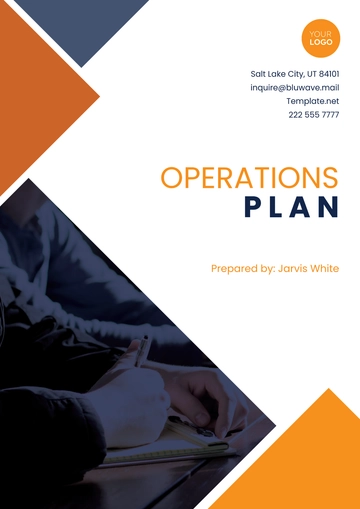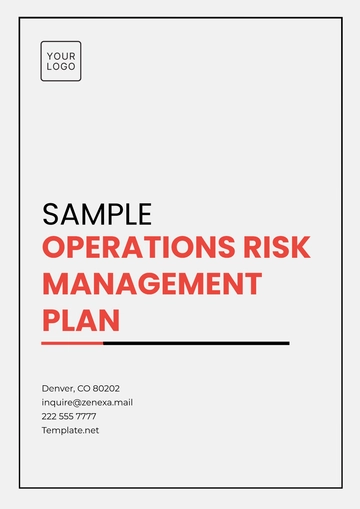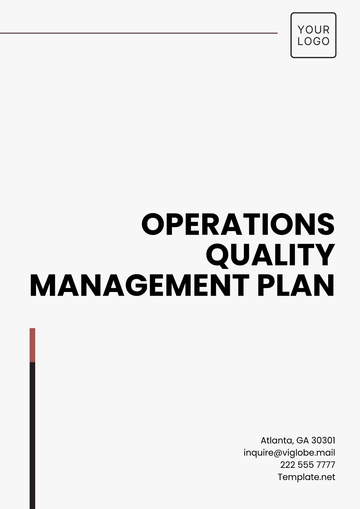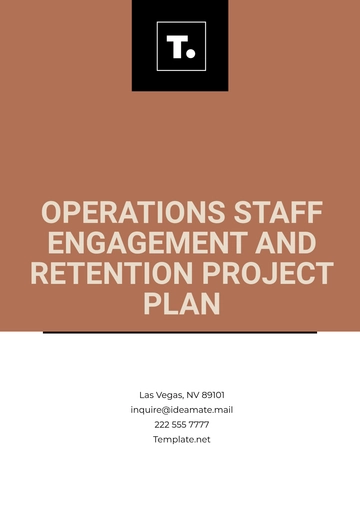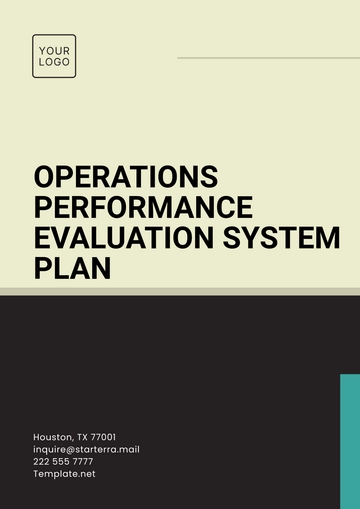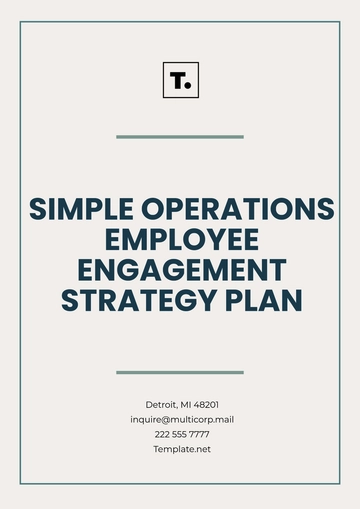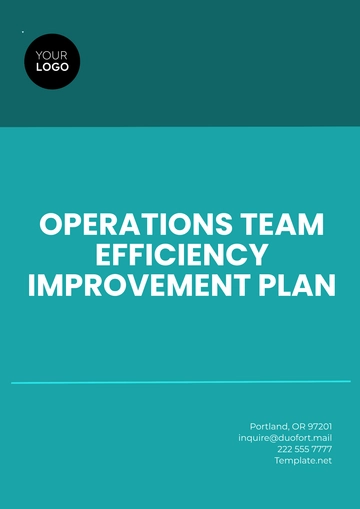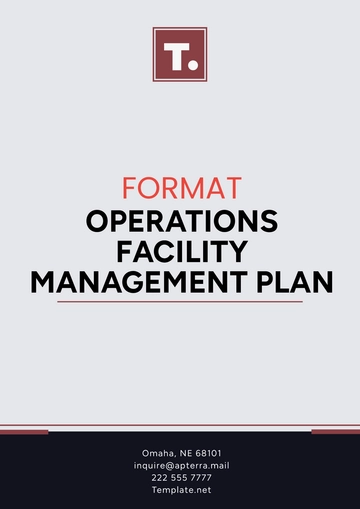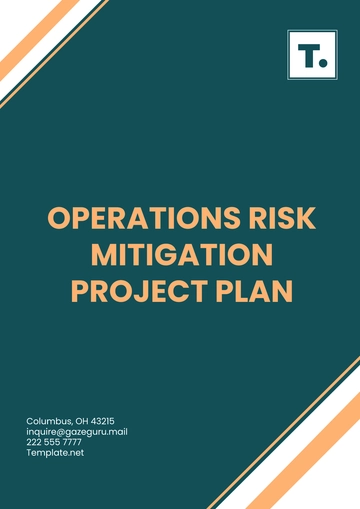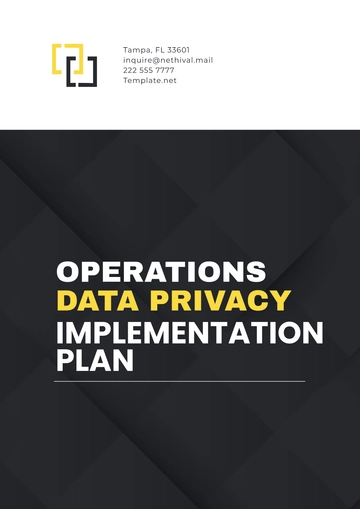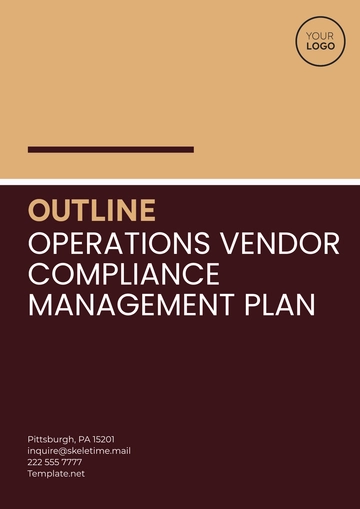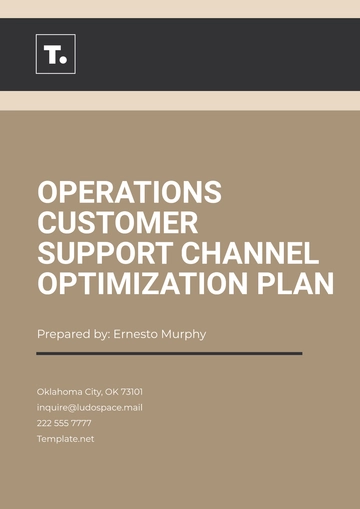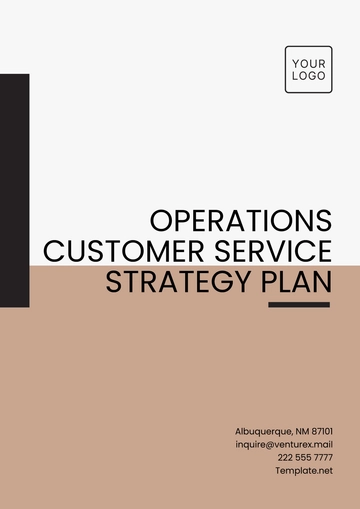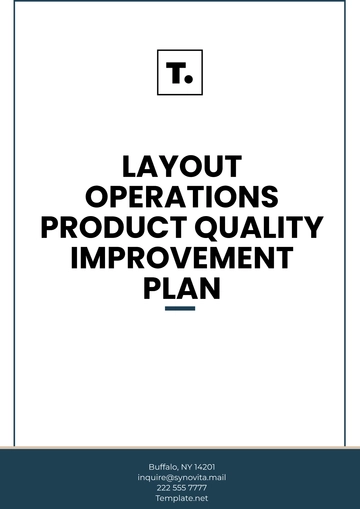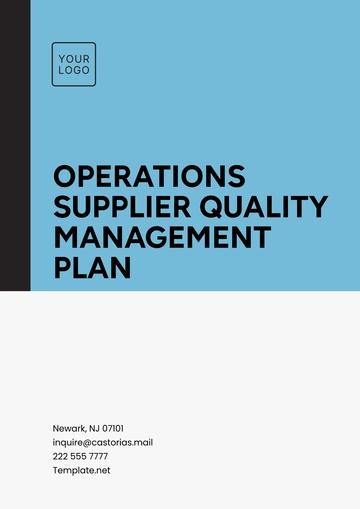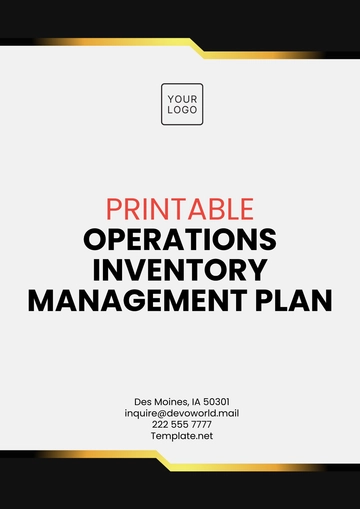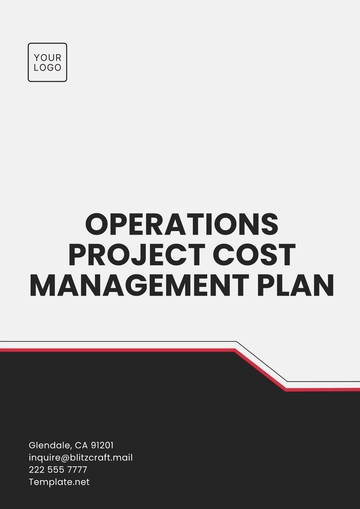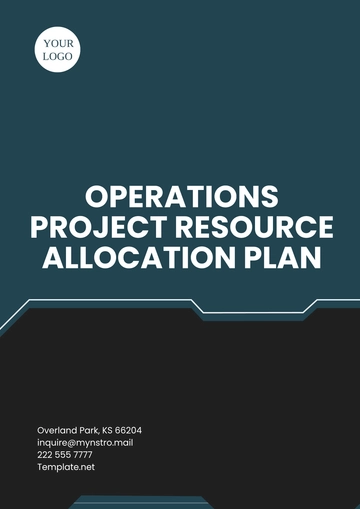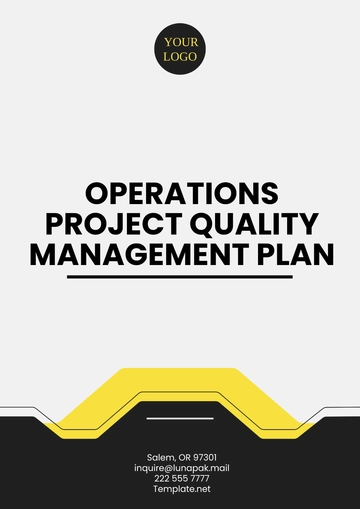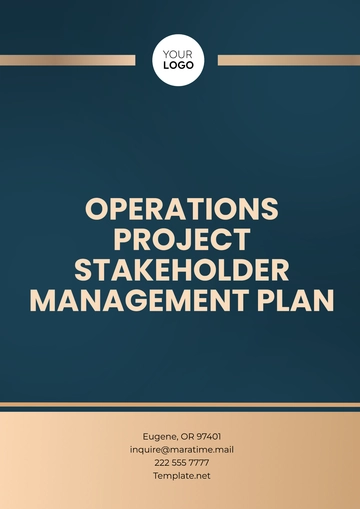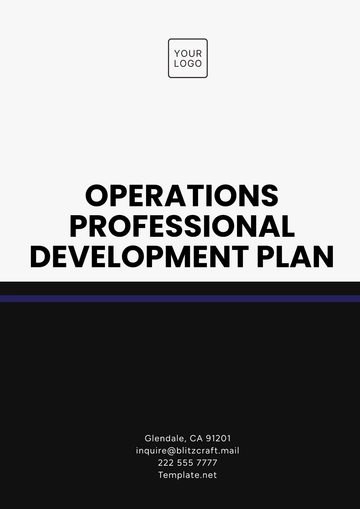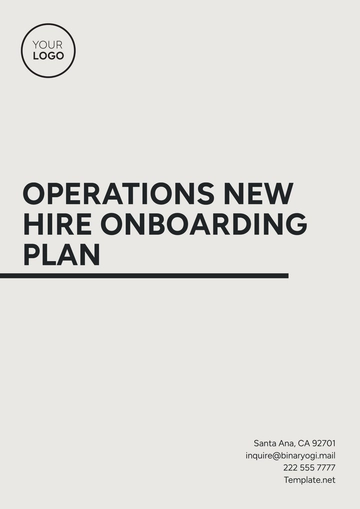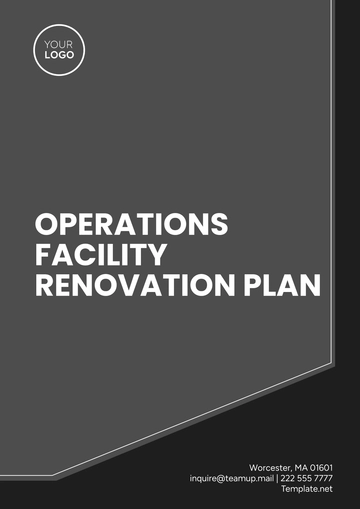Free Operations Customer Engagement Strategy Plan

Prepared By: | [Your Name] |
Company: | [Your Company Name] |
Date: | [Date] |
Introduction
The success of any organization heavily relies on its ability to foster strong customer relationships. An effective customer engagement strategy ensures that customers are not only satisfied but are motivated to maintain long-term connections with the business. This Operations Customer Engagement Strategy Plan outlines the approach to enhance customer interactions, boost loyalty, and maximize customer lifetime value by integrating key operational elements.
Objectives
The primary objectives of the customer engagement strategy are as follows:
Increase Customer Retention: By providing exceptional service and personalized experiences, we aim to build strong, lasting relationships with our customers.
Enhance Customer Satisfaction: Creating positive experiences through consistent, high-quality interactions will lead to improved customer satisfaction scores.
Drive Customer Advocacy: Through positive engagement, we seek to transform satisfied customers into brand advocates who will help expand our customer base.
Optimize Operational Efficiency: Streamlining processes and communication channels to support seamless customer interactions.
Key Elements of the Strategy
1. Customer-Centric Approach
The foundation of our strategy is a commitment to a customer-first mindset. This includes:
Personalized Interactions: Leverage customer data and insights to offer tailored solutions, recommendations, and support.
Empathy and Active Listening: Ensure that all customer-facing teams are trained to actively listen and respond with empathy.
Feedback Loops: Regularly collect customer feedback through surveys, social media, and direct communication to continuously improve offerings.
2. Multi-Channel Engagement
Customers engage with businesses across various platforms, making it crucial to ensure a seamless experience regardless of the channel.
Omni-channel Support: Establish consistent and responsive customer support across multiple channels, including phone, email, social media, chat, and in-person interactions.
Proactive Communication: Implement automated systems for order updates, personalized emails, and reminder notifications to keep customers informed at all times.
Self-Service Options: Provide easy-to-navigate online resources such as FAQs, video tutorials, and customer portals for customers who prefer resolving issues independently.
3. Employee Training and Empowerment
Frontline employees play a pivotal role in customer engagement. To ensure they can deliver exceptional service:
Ongoing Training: Provide regular training to employees on customer service best practices, emotional intelligence, and product knowledge.
Empowerment: Equip employees with the authority and tools to resolve customer issues swiftly, without unnecessary escalation.
4. Data-Driven Decision Making
Using data and analytics will help optimize engagement efforts by:
Customer Segmentation: Categorize customers based on their behaviors, preferences, and demographics to tailor marketing and engagement efforts.
Behavior Tracking: Monitor customer interactions to identify trends and anticipate needs, ensuring timely responses and interventions.
Performance Metrics: Track key performance indicators (KPIs) such as customer satisfaction (CSAT), Net Promoter Score (NPS), and customer retention rates to measure success and identify areas for improvement.
5. Loyalty and Rewards Programs
Encouraging repeat business through loyalty programs can significantly increase customer engagement:
Incentives: Offer exclusive discounts, early access to new products, or reward points for loyal customers to keep them engaged.
Tiered Membership: Create a tiered loyalty program where customers can unlock additional benefits as they reach higher levels based on their engagement and spending.
6. Customer Engagement Automation
Leveraging automation tools can improve efficiency while maintaining a personal touch:
Chatbots and AI Support: Use AI-powered chatbots to handle basic inquiries, ensuring customers get quick responses while freeing up staff for more complex issues.
Automated Follow-ups: Implement automated email campaigns to follow up on purchases, collect feedback, and re-engage inactive customers.
7. Customer Engagement Metrics and Reporting
Tracking and reporting customer engagement is crucial for continuous improvement:
Customer Satisfaction (CSAT): Use surveys to assess how satisfied customers are with the product or service, and identify areas for improvement.
Net Promoter Score (NPS): Measure customer loyalty and the likelihood of recommending the business to others.
Churn Rate: Monitor the rate at which customers stop engaging with the brand to identify possible issues early.
Implementation Timeline
Action Item | Timeline | Responsible Party | Status |
|---|---|---|---|
Develop customer personas | 1 month | Marketing & Analytics | Not Started |
Set up omnichannel communication | 2 months | IT & Customer Support | In Progress |
Launch loyalty program | 3 months | Marketing & Operations | Not Started |
Roll out training programs | Ongoing | HR & Operations | Ongoing |
Implement automated engagement tools | 2 months | IT & Customer Support | Not Started |
Conduct quarterly customer satisfaction surveys | Every 3 months | Customer Relations | Not Started |
Budget Considerations
An essential aspect of this strategy is ensuring the appropriate resources are allocated:
Technology Investments: Purchase of CRM tools, AI chatbots, and analytics software for data-driven engagement.
Training Programs: Budget for ongoing employee training and development.
Rewards and Loyalty Programs: Allocate funding for the development and management of the rewards program, including discounts, loyalty points, and exclusive offers.
Conclusion
The proposed Operations Customer Engagement Strategy Plan focuses on building strong customer relationships, improving satisfaction, and driving business growth through a data-driven, personalized, and multi-channel approach. By implementing these initiatives, the organization will not only enhance customer experience but also foster long-term loyalty, creating a competitive advantage in the market.
- 100% Customizable, free editor
- Access 1 Million+ Templates, photo’s & graphics
- Download or share as a template
- Click and replace photos, graphics, text, backgrounds
- Resize, crop, AI write & more
- Access advanced editor
Foster long-lasting customer relationships, drive brand loyalty, and achieve operational excellence! Ignite robust customer engagement strategies with the Operations Customer Engagement Strategy Plan Template on Template.net! This editable plan offers a customizable framework to elevate your customer engagement initiatives. Utilize our advanced AI Editor Tool for precise edits! Access immediately!
You may also like
- Finance Plan
- Construction Plan
- Sales Plan
- Development Plan
- Career Plan
- Budget Plan
- HR Plan
- Education Plan
- Transition Plan
- Work Plan
- Training Plan
- Communication Plan
- Operation Plan
- Health And Safety Plan
- Strategy Plan
- Professional Development Plan
- Advertising Plan
- Risk Management Plan
- Restaurant Plan
- School Plan
- Nursing Home Patient Care Plan
- Nursing Care Plan
- Plan Event
- Startup Plan
- Social Media Plan
- Staffing Plan
- Annual Plan
- Content Plan
- Payment Plan
- Implementation Plan
- Hotel Plan
- Workout Plan
- Accounting Plan
- Campaign Plan
- Essay Plan
- 30 60 90 Day Plan
- Research Plan
- Recruitment Plan
- 90 Day Plan
- Quarterly Plan
- Emergency Plan
- 5 Year Plan
- Gym Plan
- Personal Plan
- IT and Software Plan
- Treatment Plan
- Real Estate Plan
- Law Firm Plan
- Healthcare Plan
- Improvement Plan
- Media Plan
- 5 Year Business Plan
- Learning Plan
- Marketing Campaign Plan
- Travel Agency Plan
- Cleaning Services Plan
- Interior Design Plan
- Performance Plan
- PR Plan
- Birth Plan
- Life Plan
- SEO Plan
- Disaster Recovery Plan
- Continuity Plan
- Launch Plan
- Legal Plan
- Behavior Plan
- Performance Improvement Plan
- Salon Plan
- Security Plan
- Security Management Plan
- Employee Development Plan
- Quality Plan
- Service Improvement Plan
- Growth Plan
- Incident Response Plan
- Basketball Plan
- Emergency Action Plan
- Product Launch Plan
- Spa Plan
- Employee Training Plan
- Data Analysis Plan
- Employee Action Plan
- Territory Plan
- Audit Plan
- Classroom Plan
- Activity Plan
- Parenting Plan
- Care Plan
- Project Execution Plan
- Exercise Plan
- Internship Plan
- Software Development Plan
- Continuous Improvement Plan
- Leave Plan
- 90 Day Sales Plan
- Advertising Agency Plan
- Employee Transition Plan
- Smart Action Plan
- Workplace Safety Plan
- Behavior Change Plan
- Contingency Plan
- Continuity of Operations Plan
- Health Plan
- Quality Control Plan
- Self Plan
- Sports Development Plan
- Change Management Plan
- Ecommerce Plan
- Personal Financial Plan
- Process Improvement Plan
- 30-60-90 Day Sales Plan
- Crisis Management Plan
- Engagement Plan
- Execution Plan
- Pandemic Plan
- Quality Assurance Plan
- Service Continuity Plan
- Agile Project Plan
- Fundraising Plan
- Job Transition Plan
- Asset Maintenance Plan
- Maintenance Plan
- Software Test Plan
- Staff Training and Development Plan
- 3 Year Plan
- Brand Activation Plan
- Release Plan
- Resource Plan
- Risk Mitigation Plan
- Teacher Plan
- 30 60 90 Day Plan for New Manager
- Food Safety Plan
- Food Truck Plan
- Hiring Plan
- Quality Management Plan
- Wellness Plan
- Behavior Intervention Plan
- Bonus Plan
- Investment Plan
- Maternity Leave Plan
- Pandemic Response Plan
- Succession Planning
- Coaching Plan
- Configuration Management Plan
- Remote Work Plan
- Self Care Plan
- Teaching Plan
- 100-Day Plan
- HACCP Plan
- Student Plan
- Sustainability Plan
- 30 60 90 Day Plan for Interview
- Access Plan
- Site Specific Safety Plan
